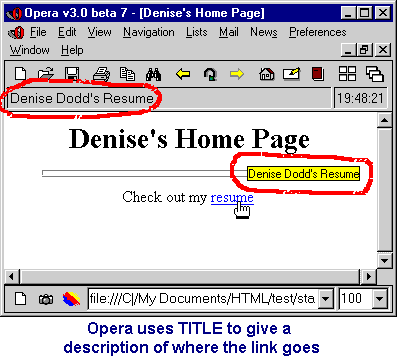Actually I haven't used Chrome till late February, 2010 when a friend told me all the great features Chrome provided. Without any doubt, Google constantly produces wonderful ideas and great applications to make our life easier. Well, I am not talking about Buzz here:-P.
Chrome is a great web browser I would recommend you to try. It carries Google search engine toolbar, enables full-text history search, remembers zoom level by site, and opens everything in a new tab for you. It is easy to use, though I cannot speak for Mac users due to lack of that experience.
Opera
The second one I recently find helpful as I learn HTML language, is Opera. This web browser has one feature I really admire. Oper
 a displays the value of
a displays the value of TITLE in a small box when the pointer is over a link. Most browsers have ignored this useful attribute. Yet it is helpful as I am one the people would feel reluctant to click on a link without knowing what's in it first.Opera also uses the value of
TITLE as the subject line in email links. So when you click on the email link, it automatically helps us fill out the subject of the email as something like "response to XX". Isn't it great?Market Share
Below is the market share of different web browsers. Apparently Chrome and Opera don't take a large piece of the market cake. Still good to know about their features.
 I don't know if you are interested or not, but html code tutorial is a helpful web site.
I don't know if you are interested or not, but html code tutorial is a helpful web site.